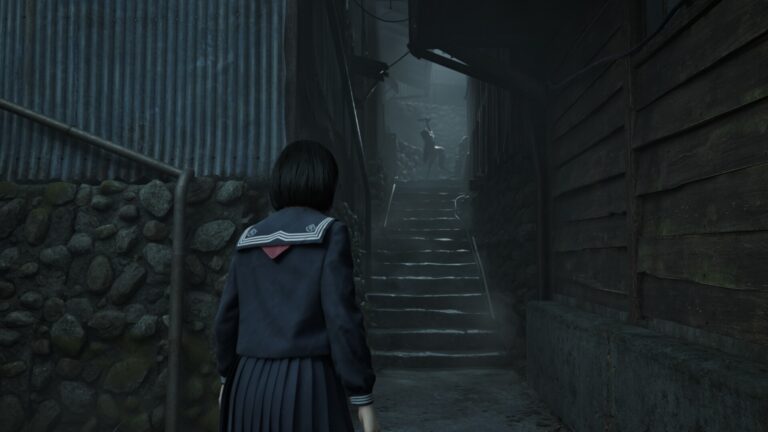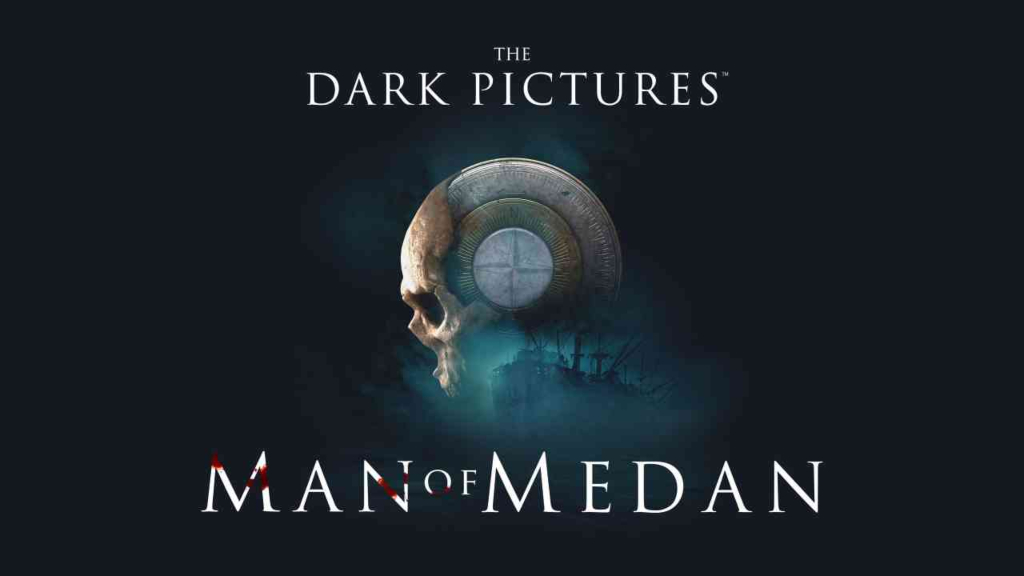
Gather around, kids, and let me tell you a scary story or two. These have been passed down across generations; they’ve leapt from literature to radio dramas, onto television, and into graphic novels. Now, they’re coming to video games. The horror anthology is a beloved medium within the genre, shining a spotlight on stories that are just a touch too short for the big screen. The Dark Pictures Anthology is doing the same thing with Supermassive Games’ cinematic game experience, beginning with Man of Medan.
Man of Medan tells the story of four young friends- two pairs of siblings- who venture out with the skipper of a small chartered yacht to dive for an uncharted plane wreck. Their dive goes well, with the exception of a run-in with a ragtag band of pirates hell-bent on making them pay. Everyone winds up splitting the danger equally, though, when they happen across an abandoned 1940s warship littered with corpses and something more sinister than the stench of death.
Players control the five main characters and their fates, each one taking turns until the completion of the game or their untimely demise. The first pair of characters, brothers Alex and Brad, are middle-class brilliant minds. Brad studies the possible locations of missing ships and aircraft at sea from WWII as a free-time hobby. Alex is studying to be a doctor and dives wrecks with his girlfriend on vacations. The next pair are Julia and Conrad, your standard-issue idiot rich kids with a heart of gold or a cunning personal agenda, depending on how you play them. Julia is dating Alex and funds their dives to spend time together sharing a hobby they both love. Conrad is a horny goofball but can be charming in the right circumstances. Fliss is the startlingly young, attractive captain of the yacht who is having not a single second of Conrad’s shit… or taking it all in stride. Olson, Danny, and Junior are pirates and protagonists, and while you may feel a kindred spirit with them from time to time, you won’t be playing them, though their fates may still be in your hands.
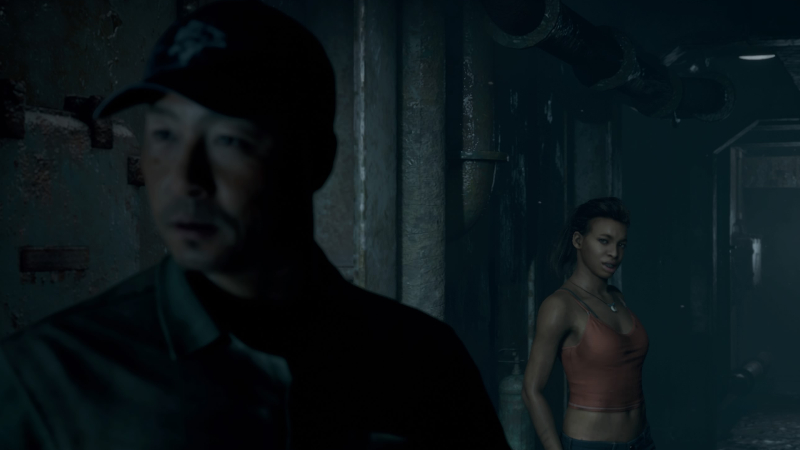
Players of Supermassive’s hit game Until Dawn will feel right at home with the controls and mechanics of the game. Choices in dialogue and actions appear frequently, elevating the experience from a choose-your-own-adventure movie to a true game. Every character must balance relationships to keep tension at ease, with some dialogue choices having an outsize impact on the compatibility of the small team. Teamwork is the key to survival- along with never pissing off the guy with the gun- so players must choose carefully when given dialogue options that will stress one of two relationships, or just cause more drama for everyone. Choices made in the game also impact the core values of the characters, which can be checked on the character screen that displays relationship metrics. Want to see exactly where one character stands with the others, or check on how a choice actually impacted things in real-time? Pop open the character screen and take a look. Every choice that factored into the current relationship score with each character is available throughout the entire game.
Completionists and scavenger types get a real leg up in Man of Medan, with secrets helping the characters piece together what is actually going on. Looking around carefully and checking halls and doors that aren’t always obvious is the best way to find them, and the best way to keep everyone alive. Make sure to turn pages in books and journals, and to turn over any other documents and objects you find. The secret is often on the back of the page. My next tip is to keep a constant eye out for framed paintings of sea settings. These contain premonitions and can guide player choices in the direction of lower body counts.
The rest of the controls are pretty standard. Walking and looking are set to normal directions when you first boot up the game but can be inverted. Unlike some games the emphasize walking while exploring, Man of Medan shows you a nifty trick before you’re even five minutes in- there is a command to speedwalk. It’s no run, but it does seriously speed up subsequent playthroughs. Once you are in your second or third playthrough and you’ve found most of the secrets, wear that button out. You can shave almost a full hour off, which is great for those of us who want to play all of the possible choice combinations back to back.
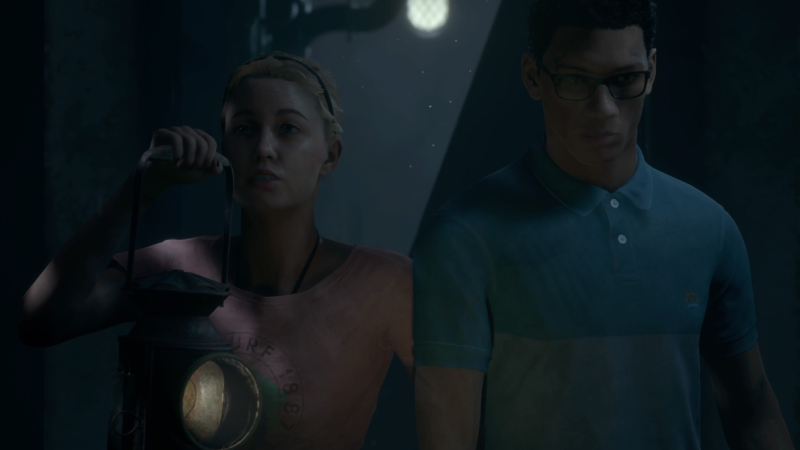
The developers at Supermassive deserve another huge shout-out for another option they’ve included in Man of Medan. It is an entire page of them, really. The accessibility controls in The Dark Pictures Anthology are the best I have seen to date. Subtitles can be had with or without a background to set them further apart from the graphics and can be all one color or color-coded to each character. Quicktime events can be changed to not time out, though pressing the wrong button still fails the event. This gives more seconds to hands that need them, though the prompt is the same in the game, maintaining the tension for players who need the time. The same is true of the option to turn repeated button mashing into a single long press, which I used to help with a wrist pain flare. The prompt still shows mashing, so players still get the feeling that they could fail at any second. The information sidebar can be toggled on and off, and the sound settings allow for music, sound effects, dialogue, and master volume to be controlled separately for each player to optimize for their own needs. There are also several different languages for subtitles, increasing the number of players who will be able to enjoy the game. Nothing in the game requires directional sound, so I believe that even fully deaf players will be able to enjoy this game. On its brightest settings, Man of Medan is still very dark, which could be hard on low vision players. Finally, there is a moment in one of the special features outlining the history of horror anthologies that rides the line of flashing bright light and could possibly spell trouble for seizure and migraine sufferers. I would have someone well versed in what affects you personally prescreen that feature before you watch it, just to be very safe.
The sound design in Man of Medan is incredible. The team outlined their process for retrieving sound on real ships in one of the early developer diaries for this game. True to their word, the sounds bounce and behave like they should in this setting, giving the already lifelike feel of the game even more weight. The music is excellent as well, with one tiny exception. Supermassive, if you’re reading this: what was that opening and credits sequence music choice? The song is great. It is an enjoyable tuned. It just fits like a chihuahua sweater on a great dane. That was a baffling and immersion-killing choice. Again, not a bad song, just incredibly out of place. The Silent Hill Downpour kids are going to shred you for that one.
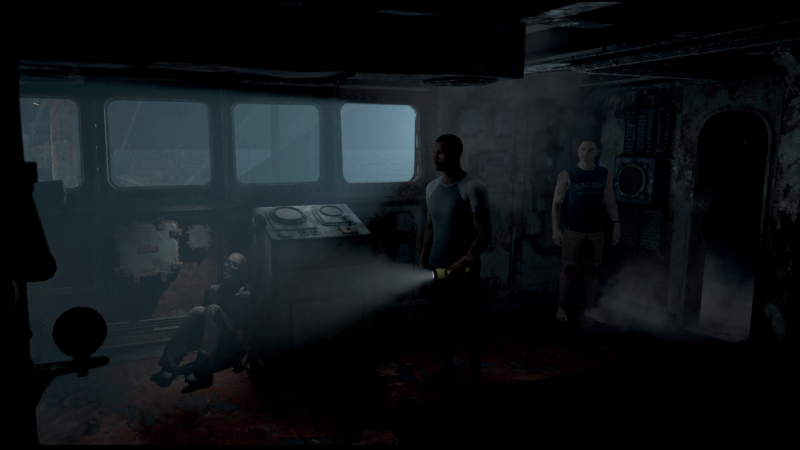
Along with the realism of the sound design, the lighting in Man of Medan is top-notch. I haven’t seen such good dust particles since The Last of Us. When you’re in a long-abandoned setting, that extra hint of realism goes a long way. The lighting on the yacht is great, too, probably due to the same fieldwork that yielded the sound being used for the capture of lighting cues. All of that attention to detail adds up to create a beautiful, immersive game that feels more cinematic than some recent CGI movies.
The realism doesn’t stop at development, though. As we mentioned before release- and before we got our review code- the Dark Pictures Anthology seems to be covering real urban legends. The Ourang Medan was a real(ish) ship recorded in news, logs, and even letters to and from the United States CIA. The legend goes that it left China after WWII carrying illicit cargo, then went into distress, reaching two nearby ships with its calls that all on board were dead, the boat was merely floating, and the radio technician was actively dying. By the time the other ships arrived, they found a floating graveyard, but the ship exploded before they could pull it to port. A related story tells of a lone survivor found on a deserted atoll nearby, who told of the same ship full of dead crew before mysteriously dying himself. Even more mysterious is the fact that this made international news and was written about to the CIA, but no records of the Ourang Medan or distressed ship at that time in the Marshall Islands exists at all. Was it real? Was it the work of the supernatural? Did a government wanting to keep its secrets cover the whole thing up? No one really knows. That’s the fun of ghost stories.
The combination of good developers and a great story make for an excellent game. Man of Medan is almost infinitely replayable in solo mode, but also brings two multiplayer modes to the table. One is an online two-person story mode in which players take on different characters, often playing entirely separate scenes at any given moment. Each makes their own choices, leaving their partner to deal with the uncertainty of sharing decisions that could kill off characters. The other multiplayer mode is ‘movie night’, which allows several friends to pile onto the couch and play the game in a more democratic manner… or stage a controller-wielder coup. Pick your co-pilots carefully, there are lives at stake here.
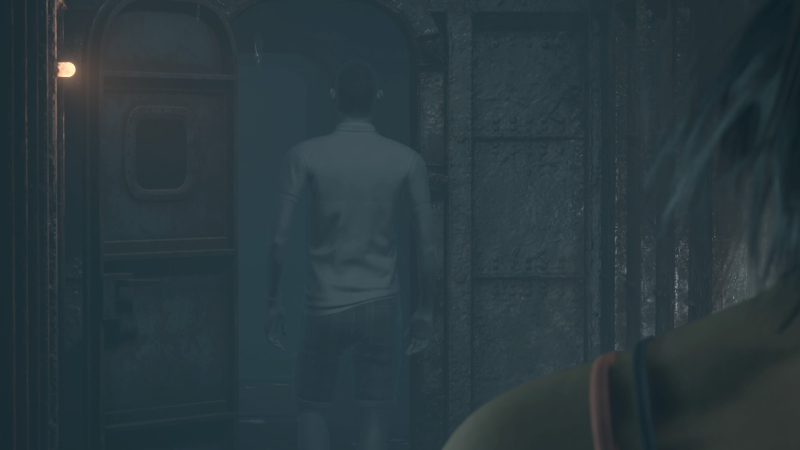
All of that said, there are a few minor issues with the game, ranging from personal pet peeves to actual technical problems. We’ll start with the technical side. During cutscenes, the video and sound had a tendency to lose synchronization. This wasn’t by much, which gave it a bit of a dub-over feel. That drives me completely mad, especially in a game that was otherwise built so well. The other issue seems like this one’s little brother, with framerate drops during particularly crowded scenes. The player still has to control the character, but the visual stutter is fierce. This never lasted more than a moment or two, and never occurred during Quicktime events. The thought that it could happen did stress me out during my first playthrough, though, which was distracting.
The other two issues are more of my own preferences. I don’t mind a well-done jump scare, especially if the setup is great. Man of Medan has plenty of those, placed just right to either really get you or to be so slick you aren’t even sure if you saw anything at all when you go back to check. It is unfortunately also chock-full of less thoughtful jump-scares. Listen, the rodent jumping out of things gag is everyone’s least favorite trick. It isn’t Halloween yet, so stick to giving us treats. The other is that for a game that touts its realism and gets it right in every other instance, I cannot find a reference point for the ridiculously convenient kerosene lantern the group encounters upon entering the ship. Another lantern that appears later is an oil or kerosene signaling lamp meant to transmit Morse code via light flashes from ship to ship. Why it is in the bottom of the ship, I do not know, but it at least belongs on the vessel. The first lamp, as far as I can tell, does not, and I even checked with naval historians to try and find this thing. Now, I am obviously not subtracting any points for that, and one historian pointed out that not knowing about it on US ships doesn’t mean it might not have been on a Dutch ship at the time, though it is odd to start the game off as a US seaman reporting back to duty aboard the ship and still stick with the actual legend’s story that the ship was Dutch, which is reiterated exactly one time, in the engine room. I’m sure someone over at Supermassive has the answer to this question because I am relatively sure someone there is a lantern nerd.
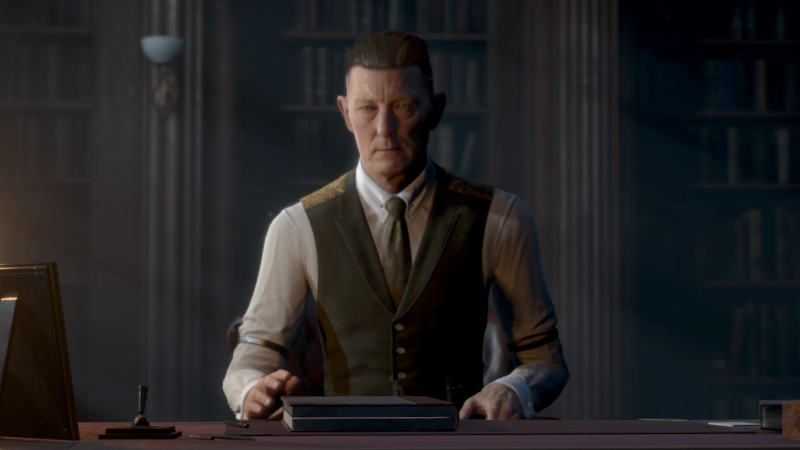
On one last note, in case the NSA is checking this out. I actually hope that they are, because as part of my research into the background of this urban legend, I had to spend a fair amount of time looking up Sarin and VX gases and their symptoms, as well as related chemical weapons. I also researched where and whether those were stored in China, which led me down the rabbit hole to Japanese Unit 731, and I would like to un-know every single thing about that now. I deal with horror as my job, but reading the real actions of that unit gave me dry heaves for over an hour. I’m not planning mass violence, though I am sure I am flagged on every kind of watch list there is after my searches over the weekend. While I enjoyed Man of Medan greatly, I find myself wishing there was some way to contribute to the victims of Unit 731 and their living families. It is not often that I feel worse about the research for a game than I do about the horror contained within the game itself. At least the research for The Dark Pictures Anthology: Little Hope announcement trailer that rolls after the credits was a bit more fun.
The Dark Pictures Anthology: Man of Medan is available on PC, PS4, and XBox One. Publisher Bandai Namco generously sent us two advance PS4 codes for the purposes of this review. Players who cannot tolerate cursing should not play this game, as it is absolutely full of it. Everyone else definitely should.
 (8.5 / 10)
(8.5 / 10)
Great
 (8.5 / 10)
(8.5 / 10)
 DestinyLeah
DestinyLeah